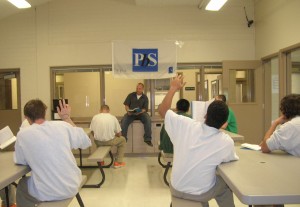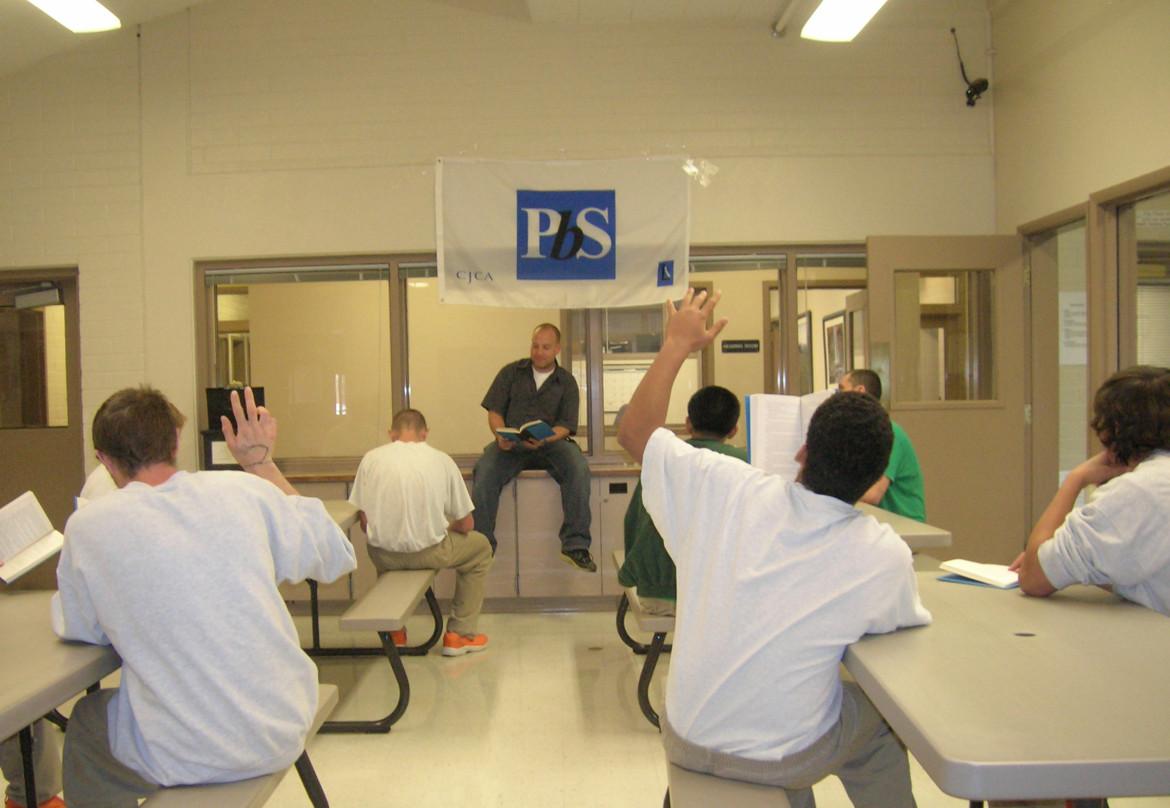
A critical thinking class at the Weber Valley Detention Center in Utah
Just as the last residents are preparing to move out of Utah’s oldest youth detention center, the departing staff and their building near Salt Lake won an award for excellence in operations, beating out competitors from 17 other states.
Weber Valley Detention Center was already scheduled to close due to budget cuts before it won the Performance-based Standards 2012 Barbara Allen-Hagen Award in July. The award recognizes one youth detention center and one correctional facility annually for best implementation of the Performance-based Standard model for improving rehabilitation and quality of life for youth inside.
The award “represents a lot of hard work on part of the employees there even though they knew it would close,” said Susan Burke, the state of Utah’s director of Juvenile Justice Services.
The award comes from the PbS Learning Institute, a nonprofit offspring of the federal Department of Justice’s Office of Juvenile Justice and Delinquency Prevention. PbS Li helps facilities achieve OJJDP standards for juvenile confinement.
“The value of PbS is it helps facilities pay attention to areas that they may not have paid attention to running day to-day operations,” said Burke.
Weber Valley’s first step in PbS was a survey of staff and youth. The most pressing finding was that both staff and youth felt the place was not safe.
It had long narrow hallways and lacked natural light, said Burke. Both things contribute to uneasy feelings.
Six months of remodeling and other changes later, and a repeat survey showed much improved feelings among staff and youth about safety and general climate.
“If people feel safe, you can focus on rehabilitation,” she said.
Kingi Tonga is Weber Valley’s facility director. He said PbS demands changes in how staff interact with kids. They are steered away from reacting to incidents with anger, sternness or assigning kids very long time in a holding cell.
“Now (staff) think,” said Tonga, “‘If this was my son, if this was my daughter, how would I treat them, would I be mad or would I extend myself to do some counseling?’”

Weber Valley's current events group
The Weber Valley staff’s reputation is getting established, said Tonga.
“The kids are beginning to feel like, ‘I would rather be here than another facility because the staff are nicer, kinder and I want to work with them,’” he explained.
But Burke also said her department had been asking for a replacement building for the aged Weber Valley, which once held a maximum 34 youths.
When the state legislature demanded budget cuts in 2012, JJS recommended Weber Valley close.
“We’re in kind of a fortunate position because we weren’t using all of our beds,” said Burke. System-wide, about 63 percent of beds are in use today.
There’s a chance that Weber Valley funding could be restored in the next state legislative session, which begins in January. Otherwise, the last youth will leave by March, 2013.
It’s not yet clear if Tonga and his 26 staff will be laid off or reassigned to other youth facilities, some of which are also now traveling the PbS road.
Just outside Cleveland, Ohio lies the Cuyahoga Hills Juvenile Correction Facility, with its 165 male residents, which won the PbS award in the correctional category.
“Youth incidents peaked in 2009 at about 2,600 but fell by 2011 to about 900,” said Ohio Department of Youth Services spokeswoman Kim Parsell, referring to incidents such as assault or fighting.

Cuyahoga Hills Juvenile Correctional Facility of Ohio members accepting their award.
And though the population of Ohio’s youth justice system has fallen by almost half since 2009, Parsell credits the leadership and engagement of Cuyahoga Superintendent Katie Needham and a “spectacular” staff for the fall in incidents and a reduced resort to seclusion at their facility.
“We value it [PbS] as a tool for being able to look at the data and use it as a management tool and kind of see where the hot spots are,” said Parsell.
PbS is one of two systems for measuring and improving conditions of juvenile justice facilities, and focuses only on the young. The other is from the American Correctional Association, which also speaks separately to adult incarcerations.
A total 28 states plus the District of Columbia are using PbS, said Kim Godfrey, PbS Li executive director.
“We train, we coach, we provide technical assistance,” she explained. “We gather data and celebrate when there’s something that goes really right.”
Both facilities came from “some pretty tough places,” design-wise, Godfrey said.
Following PbS is voluntary; some facilities come online and some drop it.
“It’s not easy. They have to do a cultural change, (and) a physical change,” especially in cases of buildings inherited from adult corrections, she added, concluding, “it’s not very expensive compared to state budgets, but it’s a lot of hard work.”
